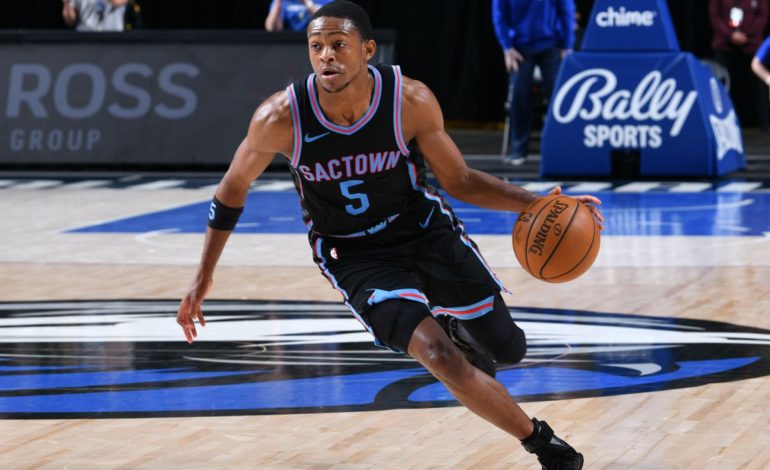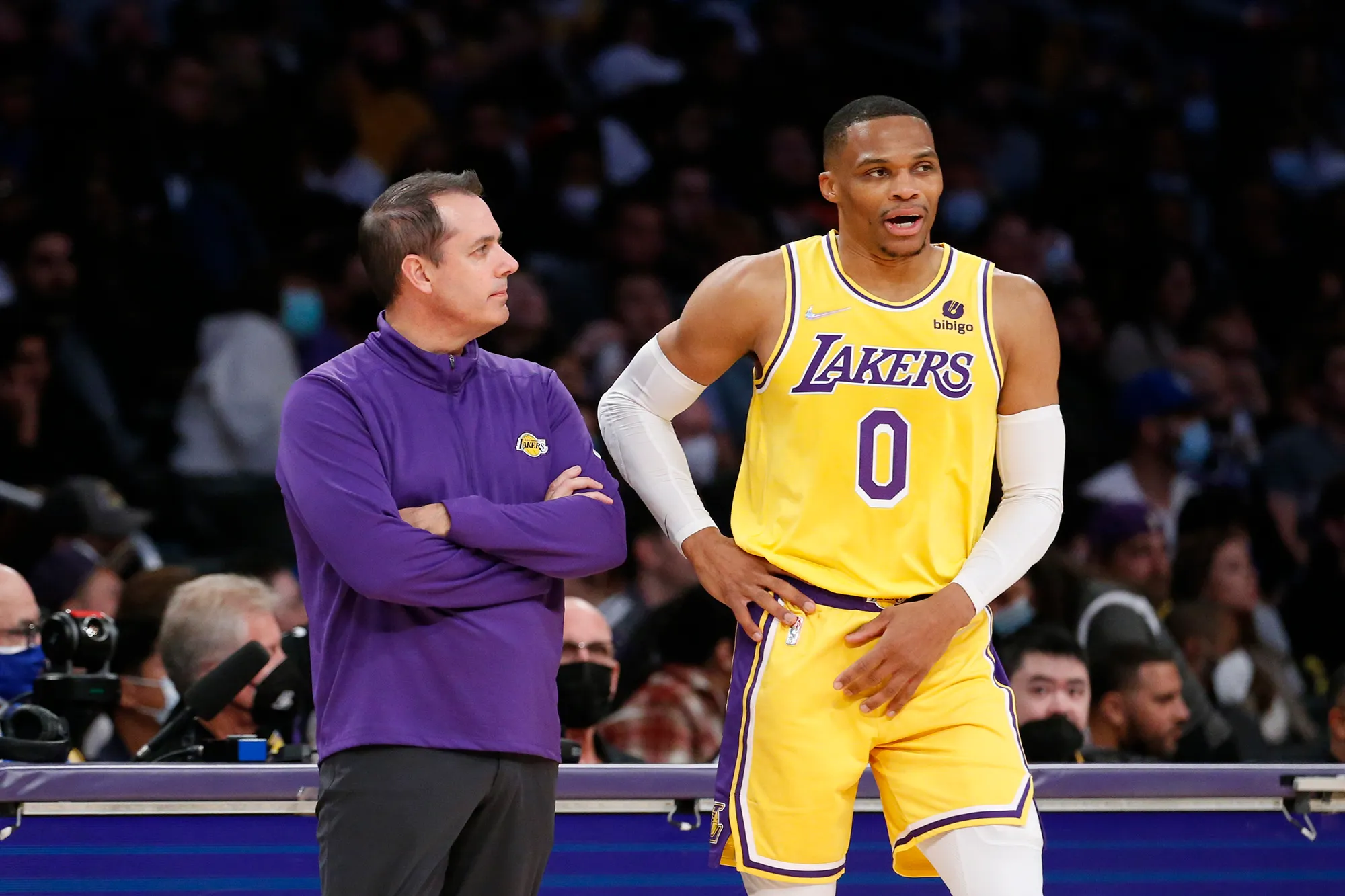A look back at some of the most thrilling wet weather races in the history of Formula 1 at Monaco.
The 1984 Monaco GP
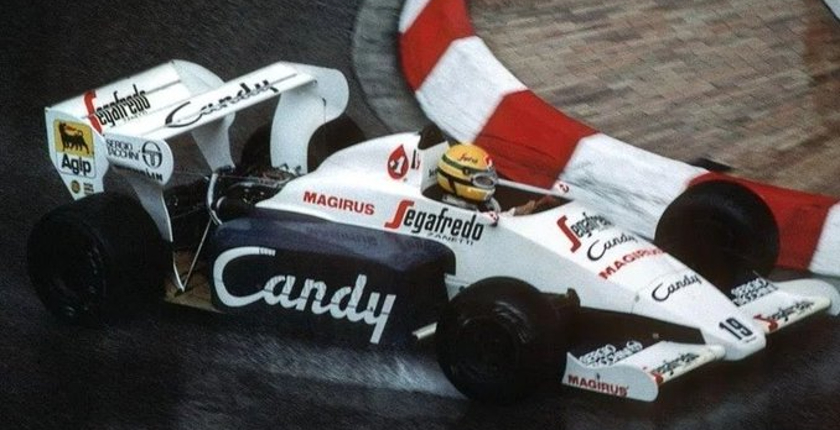
Alain Prost led the field into Sainte Devote at the rain-soaked Monaco GP in 1984, to start what would be one of the most controversial races in Formula 1 history; behind the pole-sitter was Lotus driver Nigel Mansell.
The two were racing up Beau Rivage as carnage ensued behind. The two Renaults of David Warwick and Patrick Tambay collided with the barrier at Turn One, and a few cars were slow to clear the accident. Ferrari’s René Arnoux and Michele Alboreto, as well as McLaren’s Niki Lauda, were through and they chased the battle of Mansell and Prost at the front.
Niki Lauda wasted no time and lunged down the inside of Alboreto at the Loews hairpin for fourth. Then the Austrian pulled off a truly daring overtake on Arnoux up Beau Rivage before Massenet for third.
By the 11th lap, Mansell had taken the lead from Prost, and the order behind them had changed again; Lauda from Arnoux, then Keke Rosberg, followed by the Toleman-Hart car of rookie Ayrton Senna, who started P13.
Mansell then encountered a backmarker which he cleared efficiently, but Prost lost time as he passed the same backmarker, and allowed Mansell to build a gap. Suddenly, the Lotus car slipped up the hill through Beau Rivage and slammed into the barriers at Massenet.
Still able to drive, Mansell tried to continue through Casino corner, but Prost was gaining on the Brit who slid again letting Prost through at Mirabeau, and his race was over.
In his first F1 street circuit race, Ayrton Senna showed impressive skill on the wet circuit. The Brazilian passed Rosberg for P3 and was closing in on Lauda. Then Senna flew around the outside of Lauda into Sainte Devote, he was ahead before the braking zone.
Senna set the fastest lap of the race… by four-tenths of a second, he was the quickest on track in a mid-tier car. It was quite the statement.
The rain did not yield, and as conditions became more treacherous, Niki Lauda spun his Ferrari in Massenet corner. With a broken front wing and a stalled engine, Lauda retired at Casino square.
It was Senna vs. Prost in the deteriorating conditions, a taste of the battle that would continue in the coming years, and the Brazilian was closing the 18-second gap. Prost was struggling with his car, and the conditions, so he was waving his arm out of the cockpit on the start-finish straight to tell the Race Director to stop the race.
The gap was less than seven seconds on Lap 31 when Prost waved again. On the following lap, Belgian Race Director Jacky Ickx decided to black flag the race due to the conditions. Prost pulled over as Ayrton Senna steamed across the line to complete a heroic and mature drive.
As per the regulations, because the race ended before the 75 percent distance, the driver ahead on the previous lap was the winner, that was Alain Prost of McLaren. It was an awkward podium ceremony that day in Monaco for two reasons. Firstly, many people believed that Senna was the true winner of the race. Secondly, Jacky Ickx handed Prost the win when he appealed to the McLaren driver’s demands.
The 1997 Monaco GP
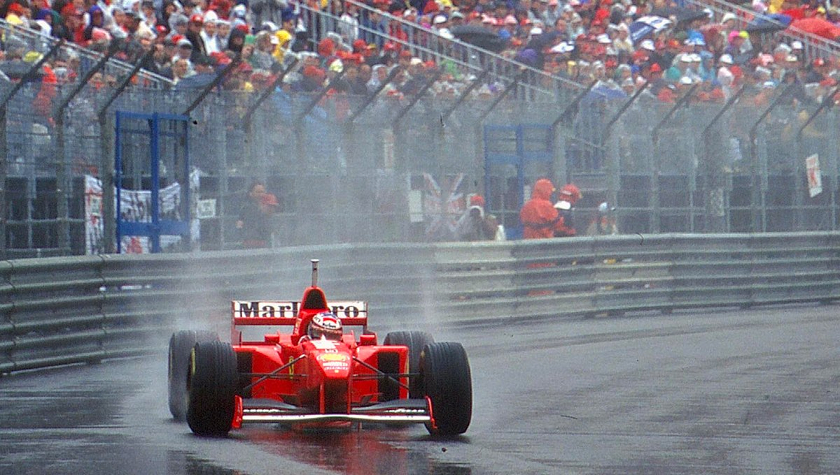
Williams-Renault driver Heinz-Harald Frentzen started in pole position in Monaco on a damp track, but it was Ferrari’s Michael Schumacher that took the lead into Turn One after a tremendous start.
The track was wetter when he led the field through Portier and into Le Tunnel. The McLarens of David Coulthard and Mika Häkkinen collected each other into the Nouvelle Chicane on Lap Two.
Schumacher had built a 15-second gap to Giancarlo Fisichella behind, Frentzen pitted from slick tires to wet tires. On Lap Eight, Jarno Trulli locked up at Mirabeau and slid into the barrier. Moments later Gerhard Berger did the same, and the two broke their front wings. Johnny Herbert also crashed but had to retire.
The wet Mirabeau corner caught out many drivers, but it was not the only slippery part of the track. Jean Alesi of Benneton-Renault spun into Portier and stalled his engine, which forced him to retire. Jordan-Peugeot driver and brother of Michael, Ralf Schumacher also retired at Massenet with suspension damage. Williams-Renault driver Jaques Villeneuve touched the barrier at Beau Rivage and retired from the damage.
Michael Schumacher pitted from the lead and Fisichella covered him off by pitting as well. Then Frentzen hit the barrier after losing the car in the Nouvelle Chicane. Jan Magnussen made a similar mistake and damaged his front wing on the bumpy curbs on Lap 47.
From 12th on the grid, the Prost-Mugen driver Olivier Panis was up to fourth, behind Eddy Irvine, Rubens Barichello, and Schumacher at the front.
Towards the end of a commanding drive, the leader locked up into Sainte Devote and the Ferrari spun around to rejoin before Barrichello caught up. The race ended at the two-hour limit, after 62 Laps. Michael Schumacher had completed a brilliant wet weather race win in Monaco.
The 2008 Monaco GP
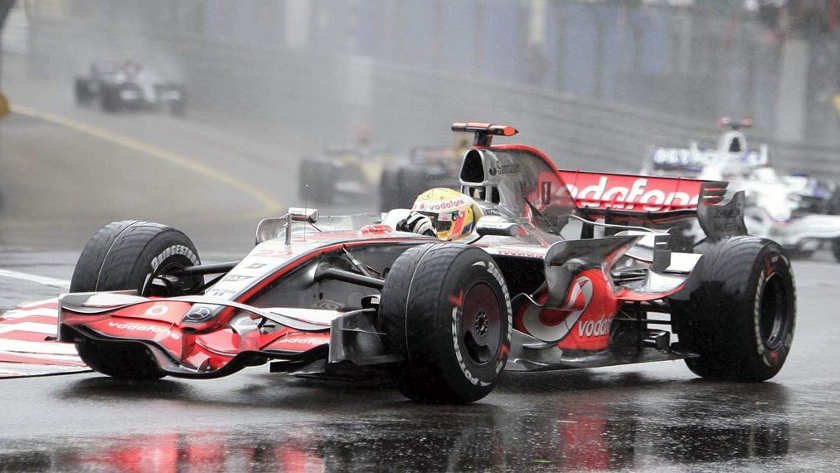
On a wet Sunday in Monaco, Ferrari’s Felipe Massa and Kimi Räikkönen started on the front row, followed by McLaren’s Lewis Hamilton in the third position. Räikkönen made a poor start and was overtaken by Hamilton who followed Massa through Beau Rivage. The rest of the field made it through Turn One incident-free.
The rain intensified, and on Lap Six, second place Hamilton understeered at Tabac corner and touched the barrier. He suffered a rear-right puncture and limped quickly back to the pits, only to lose three positions.
The Saftey Car was brought out on Lap 8 after David Coulthard crashed his Red Bull-Renault. Then Sebastian Bourdais also crashed into the barrier at the Massenet corner, and both cars had to be removed from the track.
Second-place driver Kimi Räikkönen had to pit after receiving a drive-through penalty. Ferrari was penalized for failing to have the tire set on the car before the three-minute warning at the start.
The chase for the lead was then between Robert Kubica in second and Felippe Massa in first. The two swapped places for a few laps until Hamilton took the lead. He was fueled for a longer stint after his brush with the barrier and he used this advantage to build a gap from the chasing Massa and Kubica.
There was another Safety Car on Lap 62 when Nico Rosberg lost control at the Piscine corner and crashed into the barriers on both sides of the track. The Safety Car period didn’t end until Lap 68, and after the restart, Kimi Räikkönen lost his Ferrari under braking and smashed into the back of Adrian Sutil coming out of the tunnel, which forced Sutil to retire.
The race ended after the two-hour limit, similar to the 1997 Monaco GP, with Kubica in second, Massa in third, and Lewis Hamilton the winner despite his puncture on Lap Six. It was his first of three wins in Monaco, and a defining moment in only his second season in F1. The young British driver showed real maturity to recover from damage and successfully navigate the slippery Circuit de Monaco.
The 1996 Monaco GP

The race started in wet conditions at the 1996 Monaco GP, with Ferrari’s Michael Schumacher in pole position, and Williams-Renault driver Damon Hill behind in the second position. Hill stormed off the line, a tremendous start, and took the lead into Turn One.
As Hill led the field into Portier, Schumacher oversteered into the barrier, forcing him to retire on Lap One with a crushed left suspension. By Lap Five, only 13 cars remained in the race.
On Lap 18, Damon Hill pitted from the lead, yielding it to Jean Alesi of Benneton-Renault. The two chased each other for 11 laps when Hill passed Alesi up Beau Rivage. The Williams of Villeneuve passed Eddy Irvine into Loews, the Ferrari locked up, understeered, stalled, and rejoined with the two finish drivers in Mika Häkkinen and Mika Salo.
From the lead, Damon Hill’s Renault engine failed as the Brit exited Le Tunnel into the Nouvelle Chicane; Alesi into the lead. Shortly after on Lap 60, Jean Alesi pitted and retired the car due to suspension damage, and just like that, from 14th on the grid, Olivier Panis led the GP in a Ligier-Mugen car.
On Lap 65, on a drying track, Villeneuve was squeezed into the wall at Mirabeau by a backmarker, which caused him and Luca Badoer to retire the car at Loews with a broken suspension.
Six laps later, the trio of Irvine, Häkkinen, and Salo were involved in an incident that was caused by Irvine spinning into Portier; they all retired.
The only drivers to finish the 1996 Monaco GP were the three on the podium. It was an improbable win for Frenchman Olivier Panis, a fantastic result for Ligier, and one crazy race.
Honorable Mentions:
- The 1975 Monaco GP won by Ferrari’s Niki Lauda
- The 2016 Monaco GP won by Sir Lewis Hamilton
The 2022 Monaco GP is scheduled for this upcoming weekend (May 27-29), and the forecast calls for rain. I truly believe that we will have another epic race to add to this list soon enough. Please note that these are the best wet races in my opinion, and in no particular order.
My name is Morgan Raynal, I am a writer for Belly Up Racing and Belly Up Sports. You can find me on Twitter.


